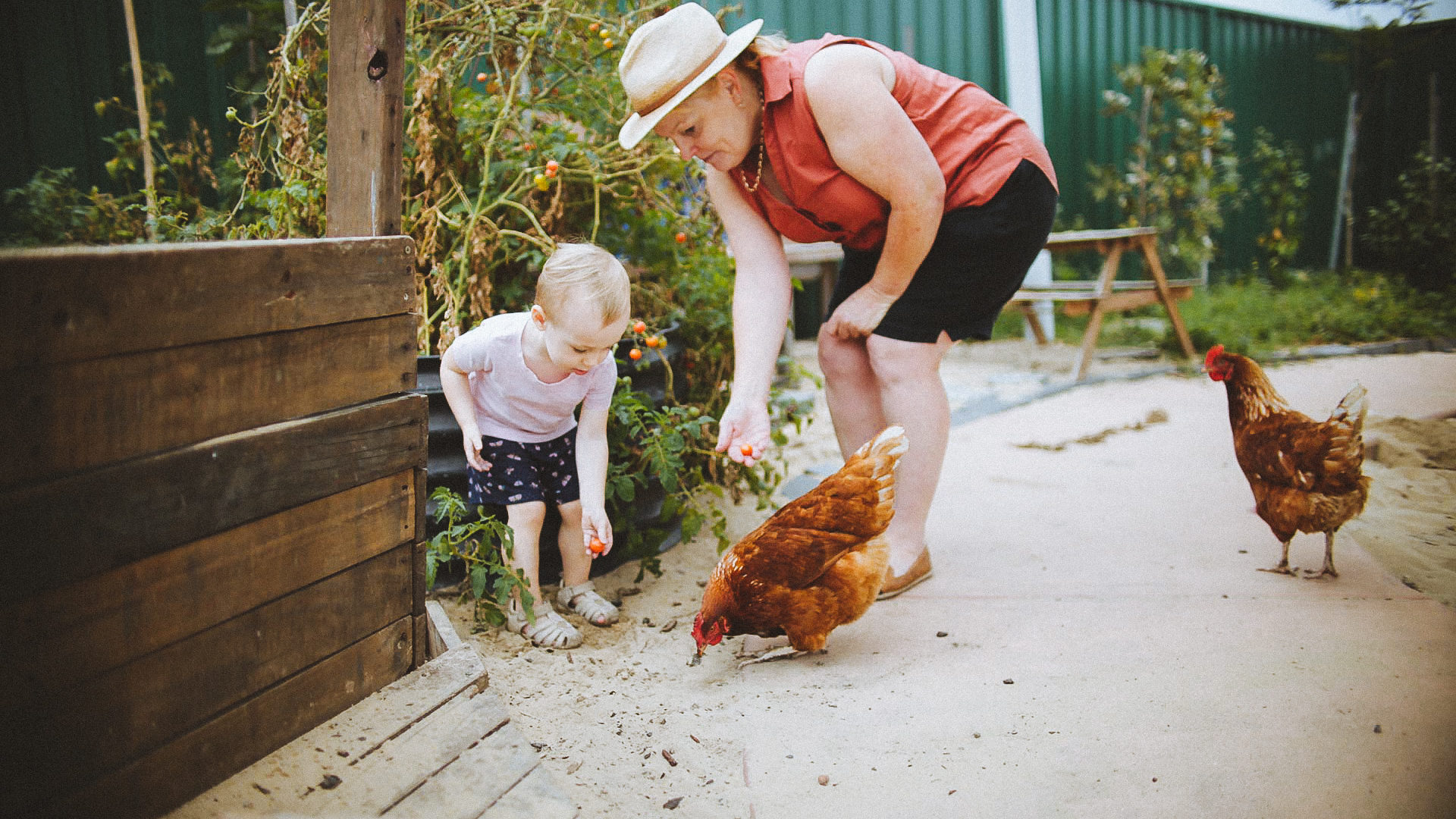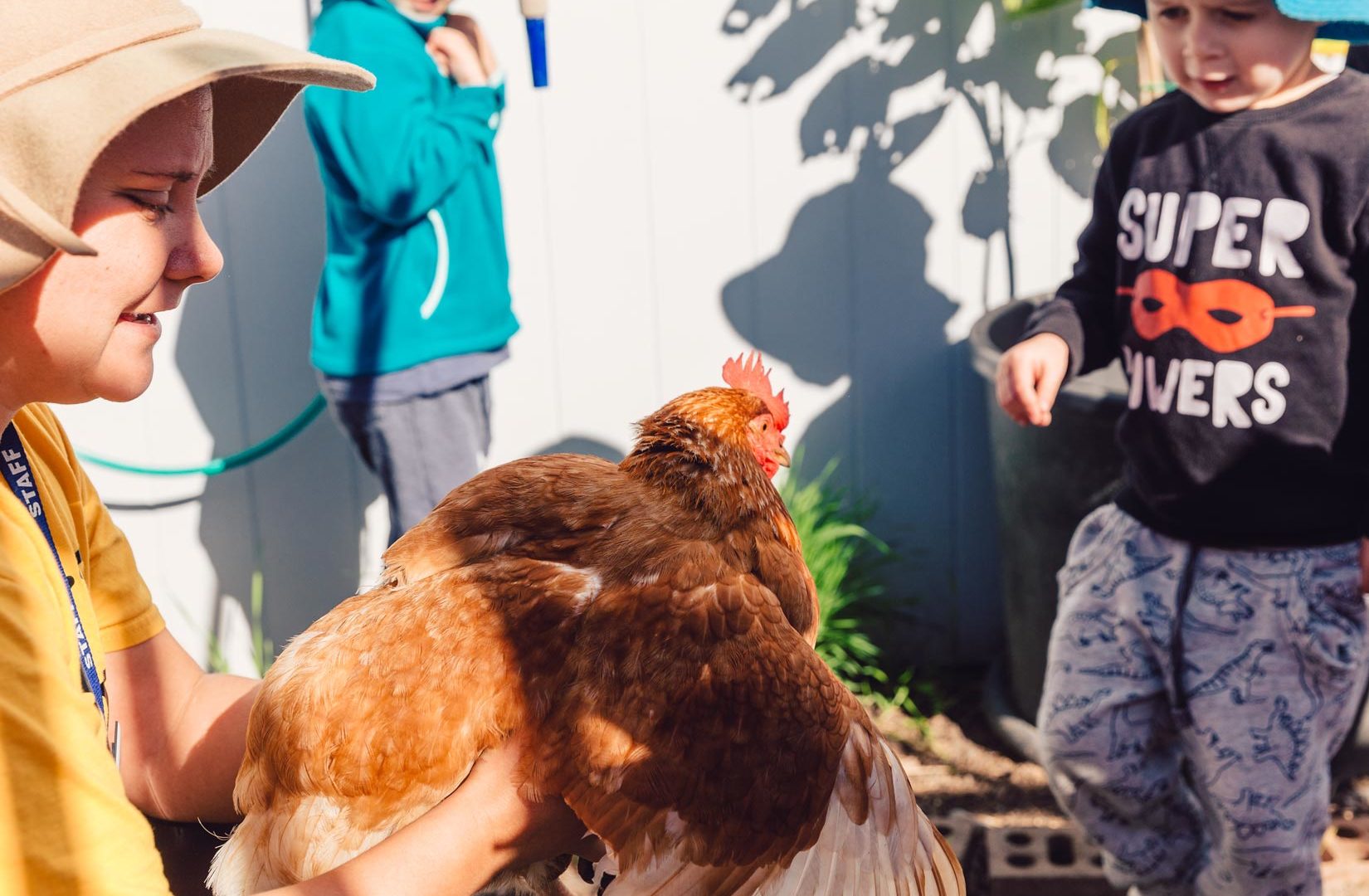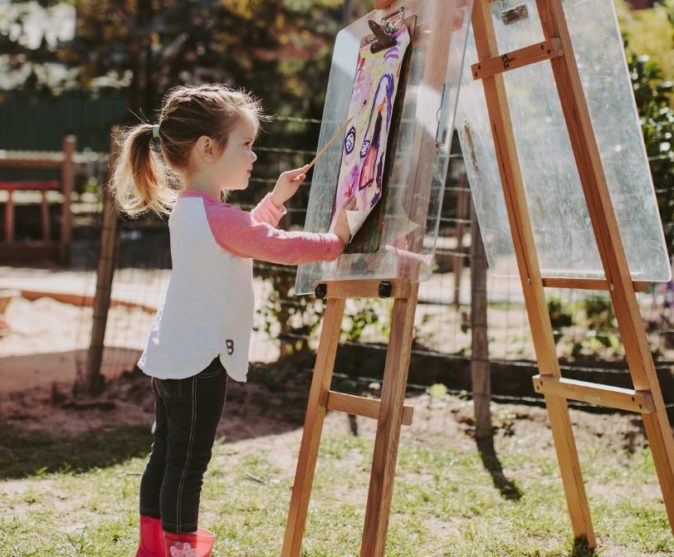Across two of our Rumpus Room centers we have chickens, rabbits, a budgerigar, zebra finches, fish, a cockatiel and a guinea pig!
Children are given the opportunity to assist in feeding the animals, collecting eggs from our chooks and maintaining the animals spaces.
Interacting with and learning to care for a pet or animals, is a valuable part of children’s learning. It provides children with exposure to life skills that they can use throughout their future lives.
Having a relationship with a pet can help children develop a caring attitude and skills such as nurturing, empathy, responsibility and improved communication.
Our animals are a daily part of our educational curriculum and often leads to other activities and learning linked to our educational focus. Our inclusion of animal interaction is directly linked to the Early Years Learning Framework (EYLF):
- Outcome 2: Children are connected with and contribute to their world
- Outcome 3: Children have a strong sense of wellbeing.
Experts say a child’s physical, social, emotional and cognitive development can all be encouraged by interaction with a pet/animal. For children especially, animals can be a wonderful catalyst for socialising. Children are more prone to approach and interact with another child who is playing with an animal. Animals can be the bridge between a less socially outgoing child and other potential playmates. It also encourages and assists in building children’s confidence in situations, trying new things and developing skills that can then be built upon. Animals have the gift of promoting Children’s self esteem. Children with low-self esteem are often more confident in performing tasks they find difficult with an animal simply because the animal does not care if mistakes are made, nor will the child be afraid of looking silly in front of the animal. Basically, animals are a source of unconditional love who provide support and NEVER judges.
Overall animals enrich our classroom experience in the following ways:
- Even children with no exposure to animals or nature in their home environment can see, feel, touch and make connections to the wide world of animals.
- Observing and caring for an animal instills a sense of responsibility and respect for life.
- Animals brings increased sensitivity and awareness of the feelings and needs of others—both animals and humans.
- Children learn that all living things need more than just food and water for survival.
- Children will see directly how their behaviour and actions affect others.
- Taking care of an animal gives a child a sense of pride and achievement.
Our animals are a source of happiness for not only our children but our educators as well!
‘So God created the great creatures of the sea and every living thing with which the water teems and that moves about in it, according to their kinds, and every winged bird according to its kind. And God saw that it was good. ‘
Genesis 1:21.



